Installing Applications
Manager | Partner
In Taikun CloudWorks, you can find more than 200 public and private repositories, which you can import with the Helm Repo URL.
Public Repositories
Public repositories provide access to a wide range of pre-built applications and software packages. You can enable or disable public repositories based on your organization’s needs.
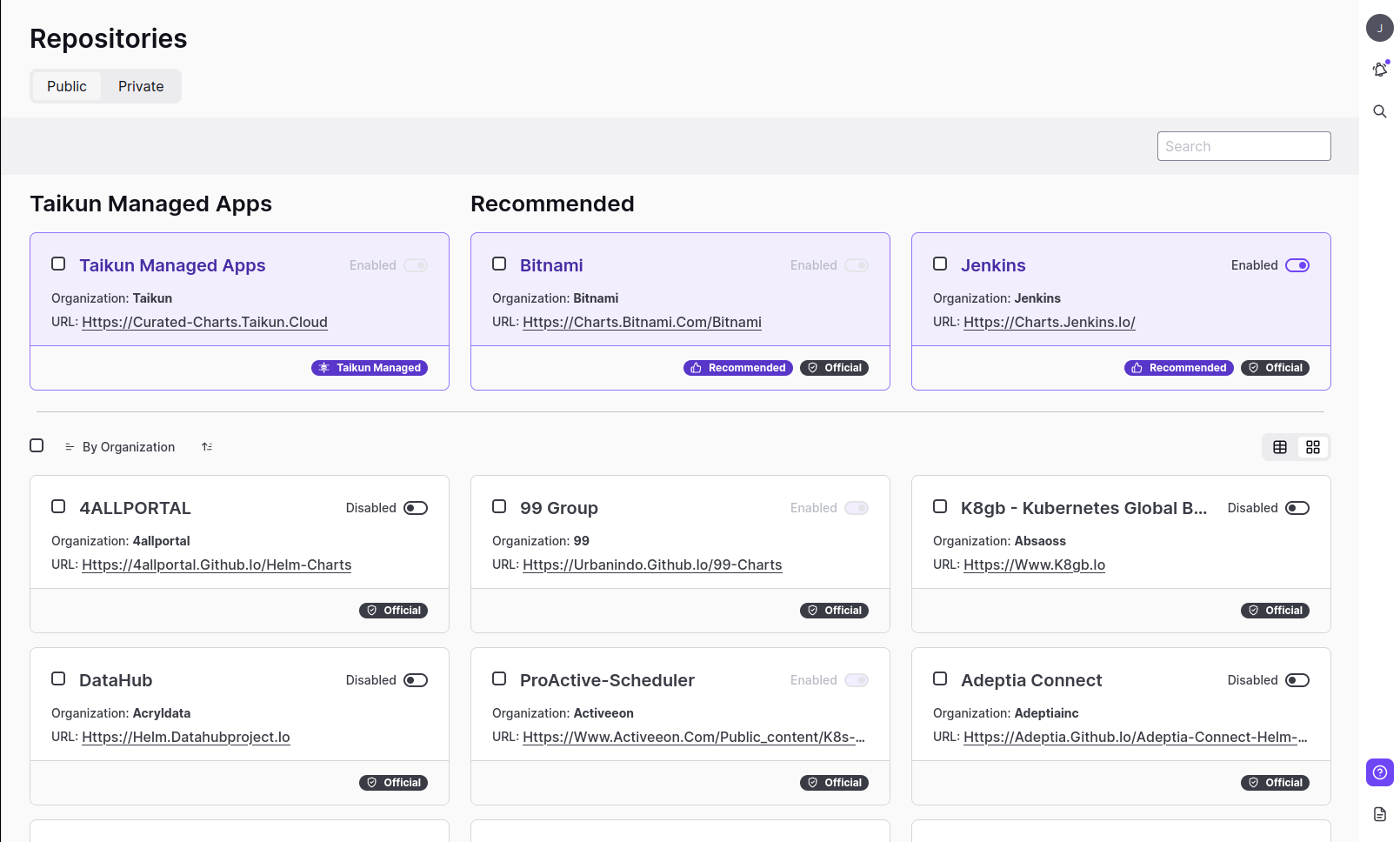
Public Repositories
Private Repositories
Taikun CloudWorks supports the addition of private repositories, allowing users to upload and manage their own custom applications and software packages. It supports both Helm repositories and OCI (Open Container Initiative) repositories, providing flexibility in how containerized applications are delivered. These repositories can be protected using username and password authentication for secure access.
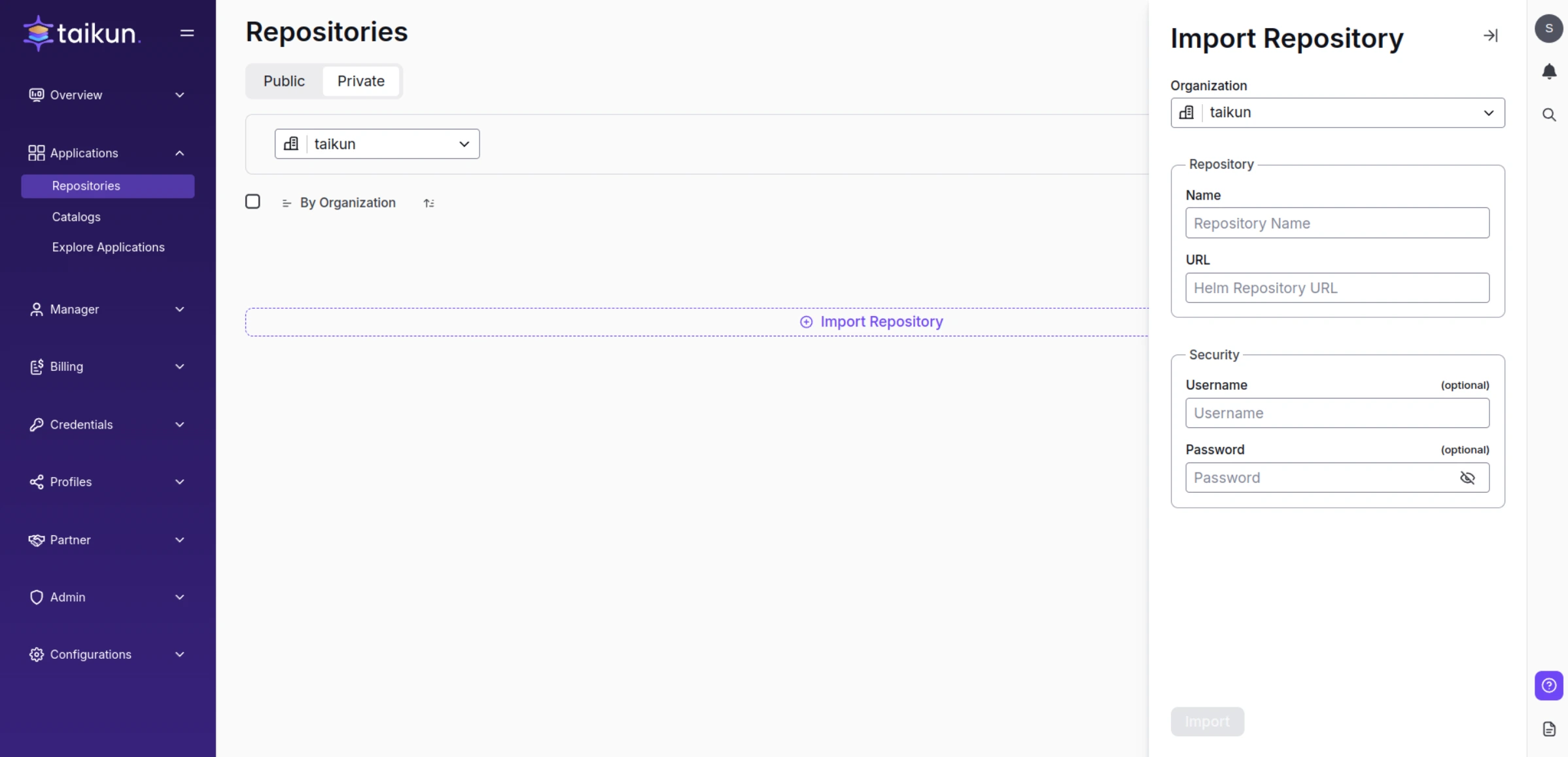
Private Repositories
How to Install an Application in a Cluster
Enable Required Repositories for Your Application
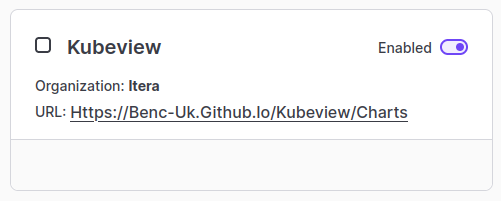
Enable Repository
Create a Catalog for Adding Applications and Binding Projects
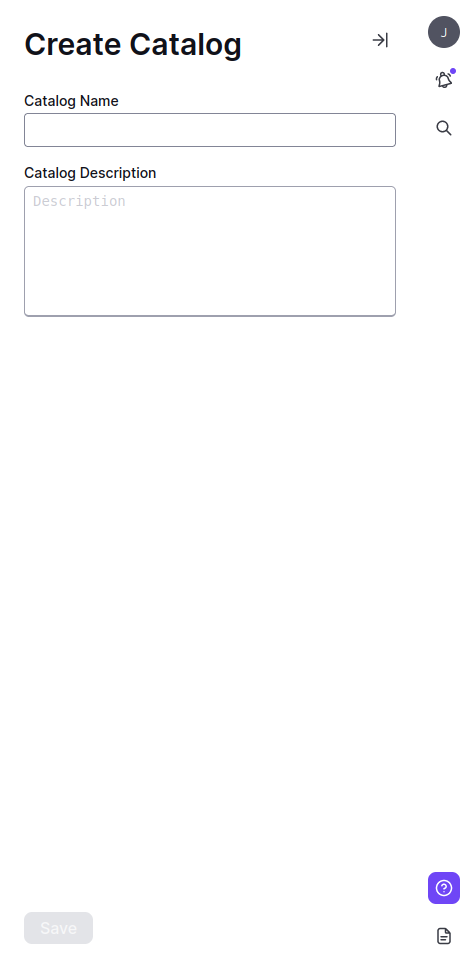
Create Catalog
Catalogs are curated collections of applications and software packages available for deployment within Taikun CloudWorks. To create a catalog, navigate to the Catalogs section in the Taikun dashboard and follow the prompts to define the catalog name, description, and any relevant metadata.
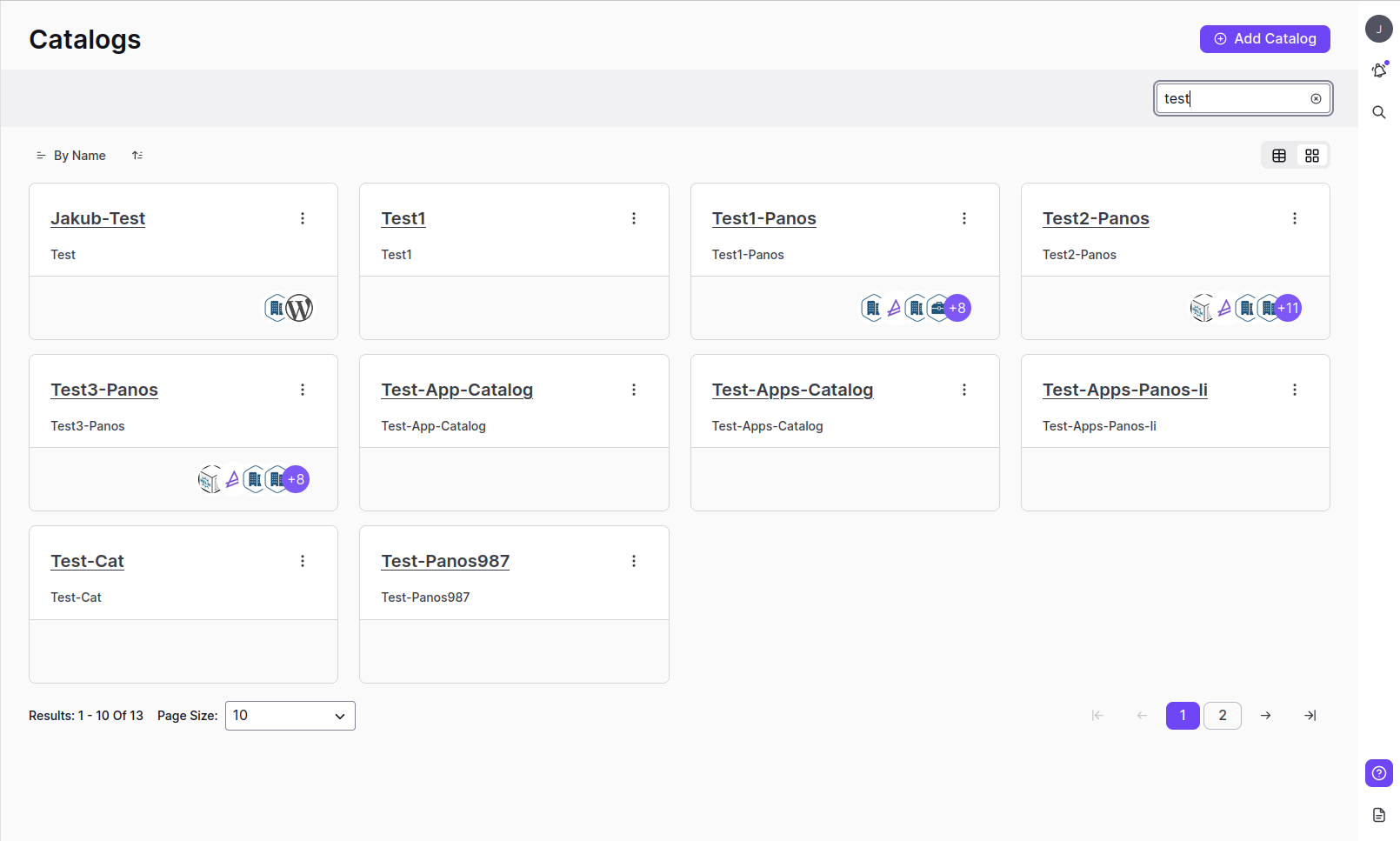
Catalogs
- When creating a catalog in Taikun CloudWorks, provide a clear description of the catalog and the applications it contains.
- Only applications whose repositories have been enabled will be visible.
- To ensure a successful installation, it is recommended only to bind Projects that are healthy and in a ready state.
- Parameter configurations can easily be located by browsing or searching applications within Taikun CloudWorks.
- When installing an application, it is possible to specify a version or use the latest version automatically.
- If the parameters are set to be both editable when installing and after installation, it is mandatory to configure them before proceeding with the installation.
Install the Application in the Cluster
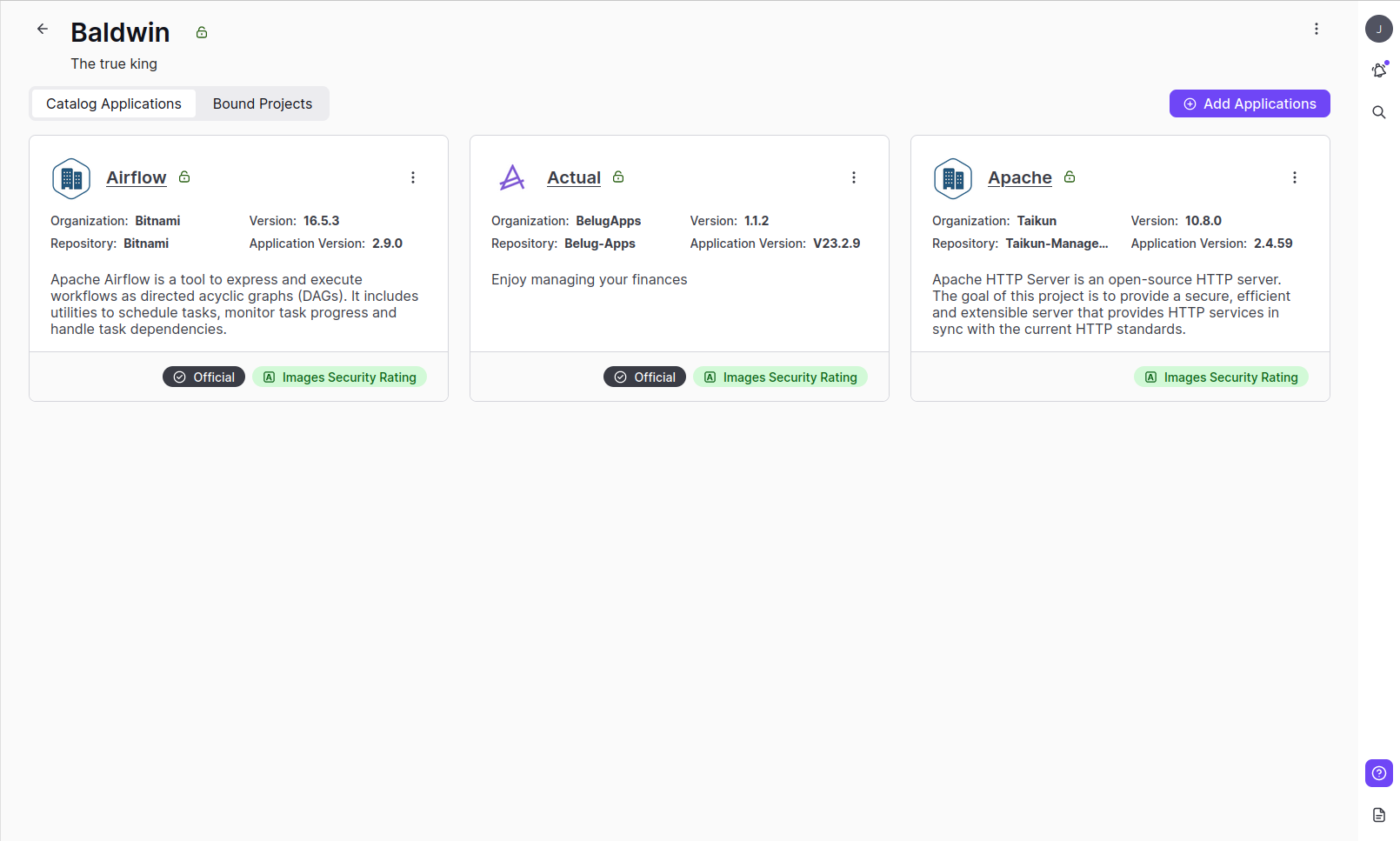
Application in the Cluster
- In the Instance name, only alphanumeric characters are allowed.
- Multiple projects can be bound to any catalog. When installing, a list of bonded projects will be visible.
- A Custom Namespace can be input.
- If autosync is enabled, applications will automatically sync whenever any updates are made.
- Selected parameters can be added/removed while installing applications. Only parameters that are set as "Editable when installing" can have their values changed during installation.
- Extra values can be added to the application during installation.
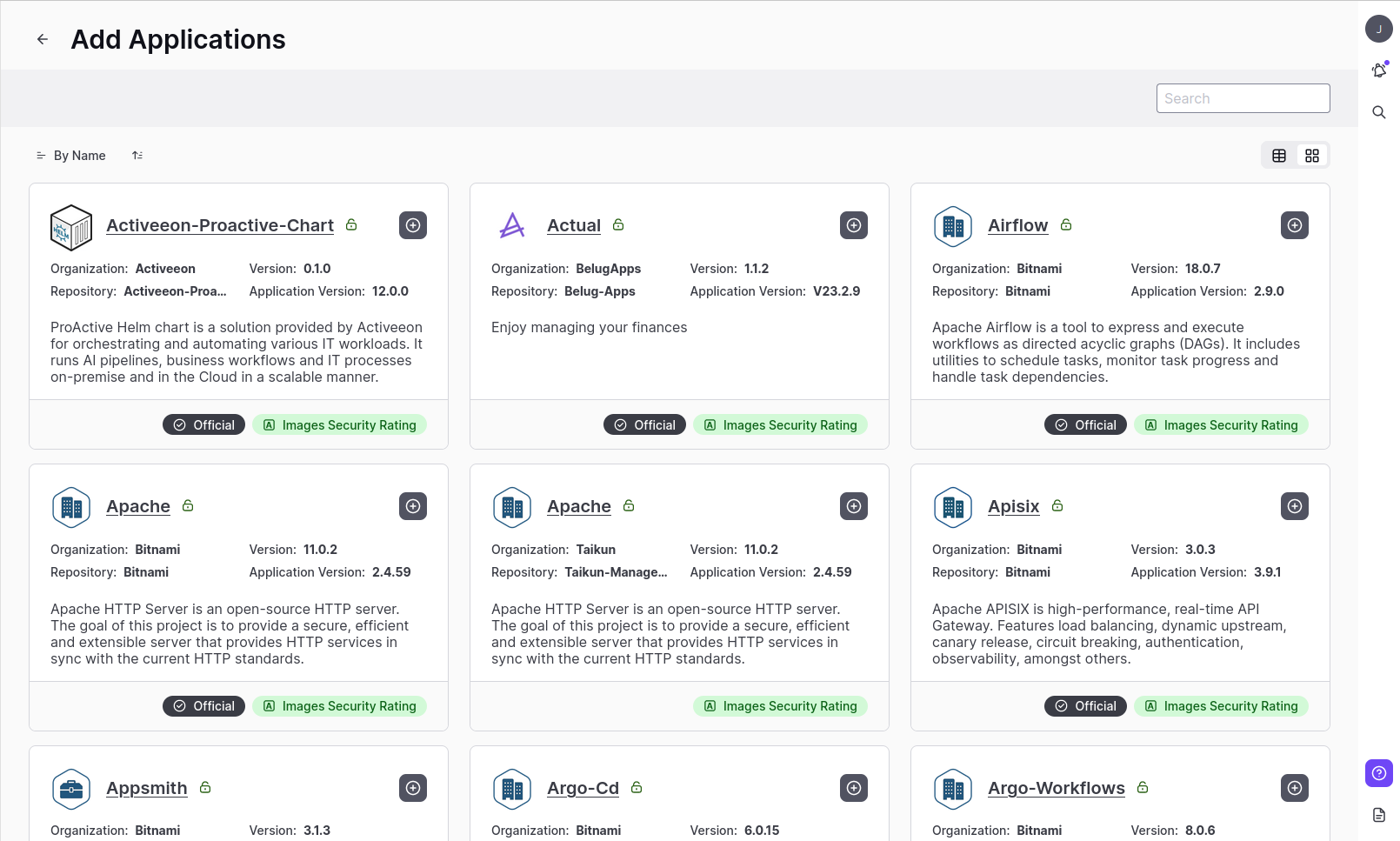
Add Application
Taikun Link
Exposing an application with Taikun Link in a project allows seamless access via a unique URL, like <myapp.app.taikun.link.> When Taikun Link is enabled, a DNS record is automatically created in Cloudflare. The Taikun Link parameters are a special type of parameter that becomes immutable once enabled, providing consistent configuration. For instance, if the isTaikunLink flag is set, the parameter becomes non-editable and non-deletable. This feature improves accessibility and security, as the application’s Taikun Link URL is conveniently displayed once created. Like the NGINX application, each has its own set of extra values to support Taikun Links.
Example of NGINX application extra values:
ingress:
annotations:
nginx.ingress.kubernetes.io/auth-tls-pass-certificate-to-upstream: "true"
nginx.ingress.kubernetes.io/auth-tls-secret: "{{taikun_link_namespace}}/cloudflare-tls-secret"
nginx.ingress.kubernetes.io/auth-tls-verify-client: "on"
nginx.ingress.kubernetes.io/auth-tls-verify-depth: "1"
enabled: true
hostname: {{taikun_link_host}}
ingressClassName: taikun
extraTls:
- hosts:
- "{{taikun_link_host}}"
secretName: "{{taikun_link_host}}-tls"
secrets:
- name: "{{taikun_link_host}}-tls"
certificate: |
{{taikun_link_certificate}}
key: |
{{taikun_link_key}}
Like NGINX, every application that supports Taikun Links has its own set of extra values to configure, enabling smooth integration with Taikun CloudWorks's infrastructure.
Info
Here are the variables which are replaced with taikun link:
{{taikun_link_namespace}}: namespace of the app{{taikun_link_host}}: url used to expose the app{{taikun_link_certificate}}: The certificate part (public key) of the generated TLS certificate for the application’s hostname.{{taikun_link_key}}: The private key part of the generated TLS certificate for the application’s hostname
Tip
For Nginx application you should use this exact template, of extra values, without any change of variables
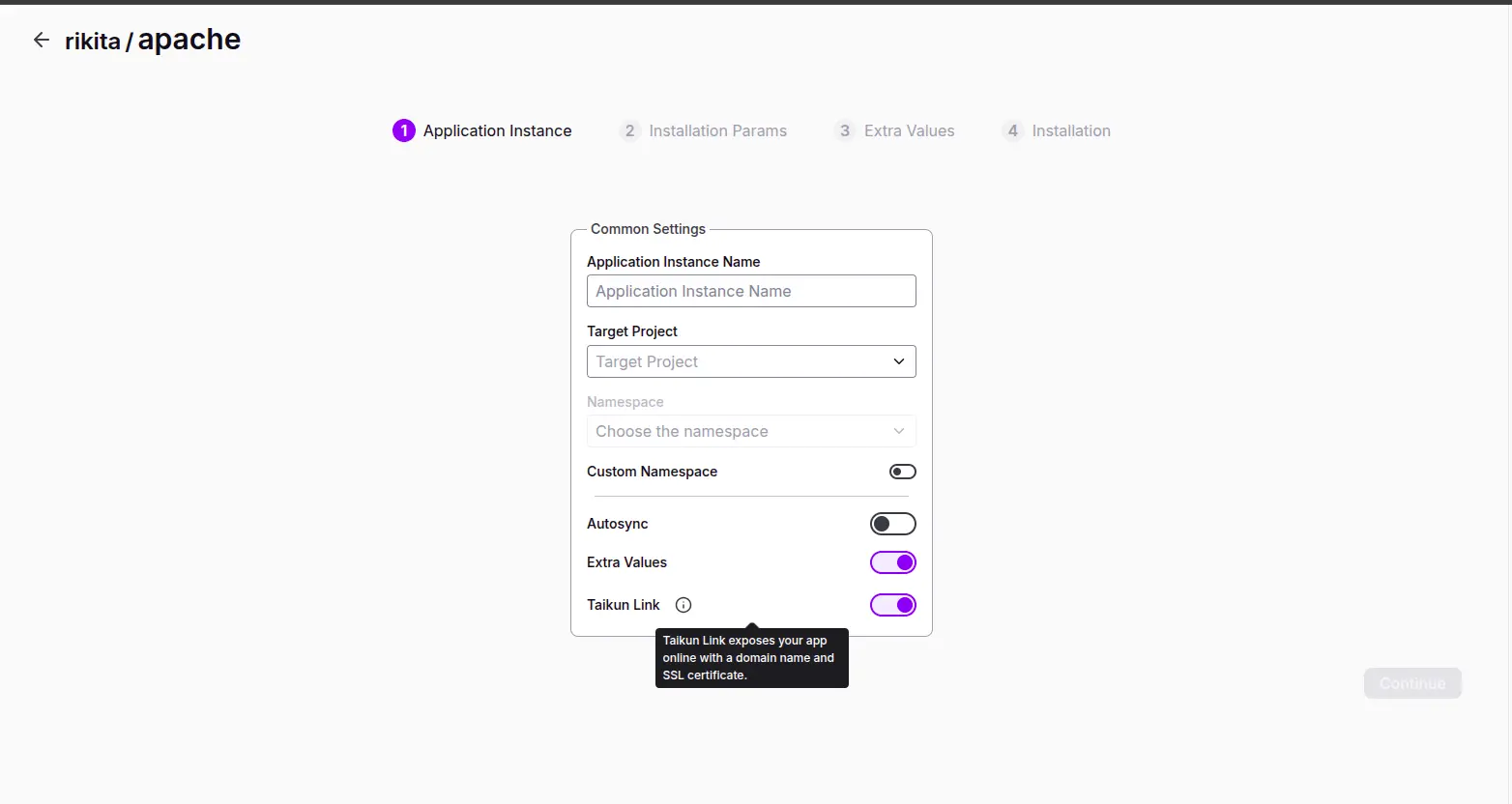
Enable Taikun Link
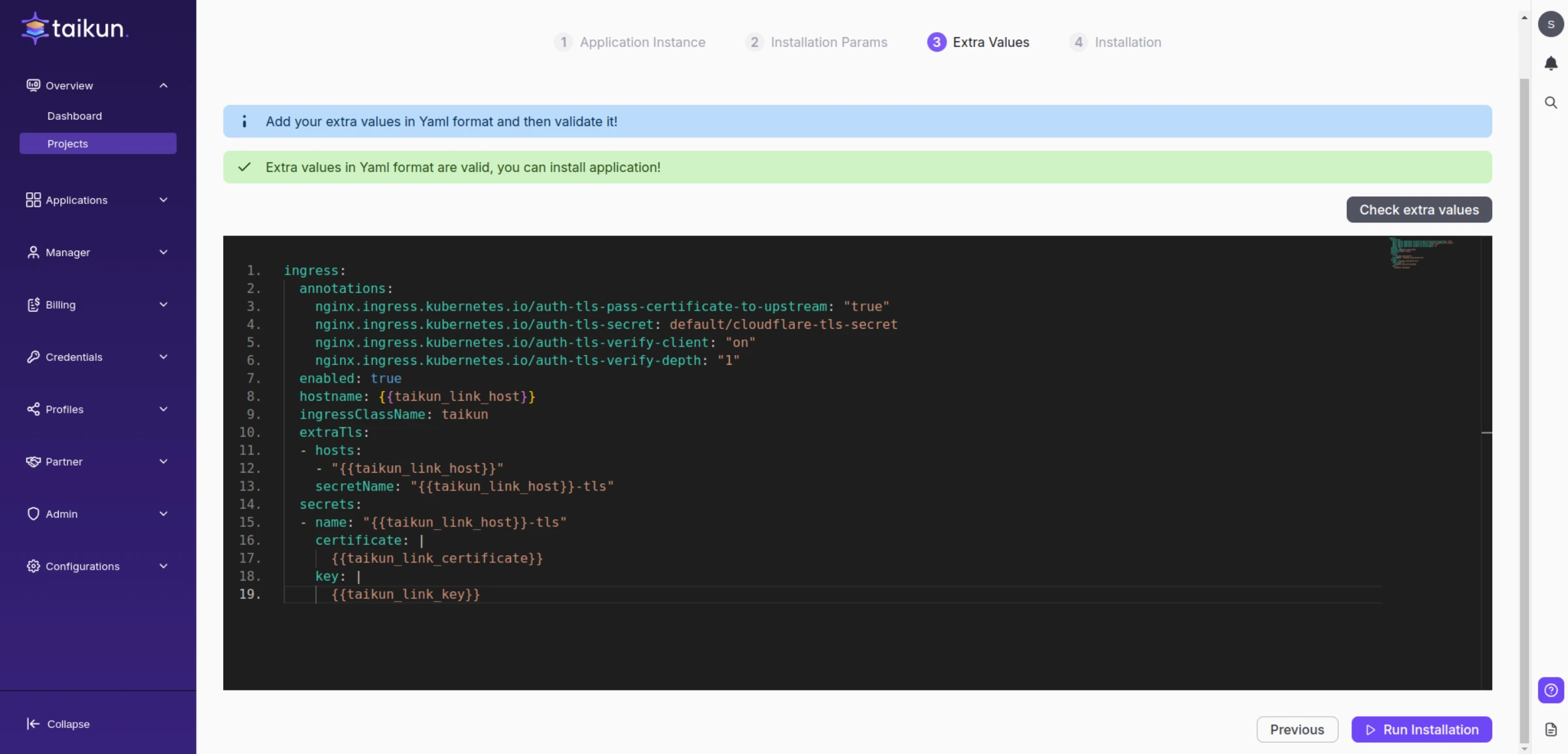
Set Extra Values
After Installing the Application
After installing the application, users can find the status of the application in: Catalogs ➡ Select User Catalog ➡ Select Installed Application ➡ Bound Projects
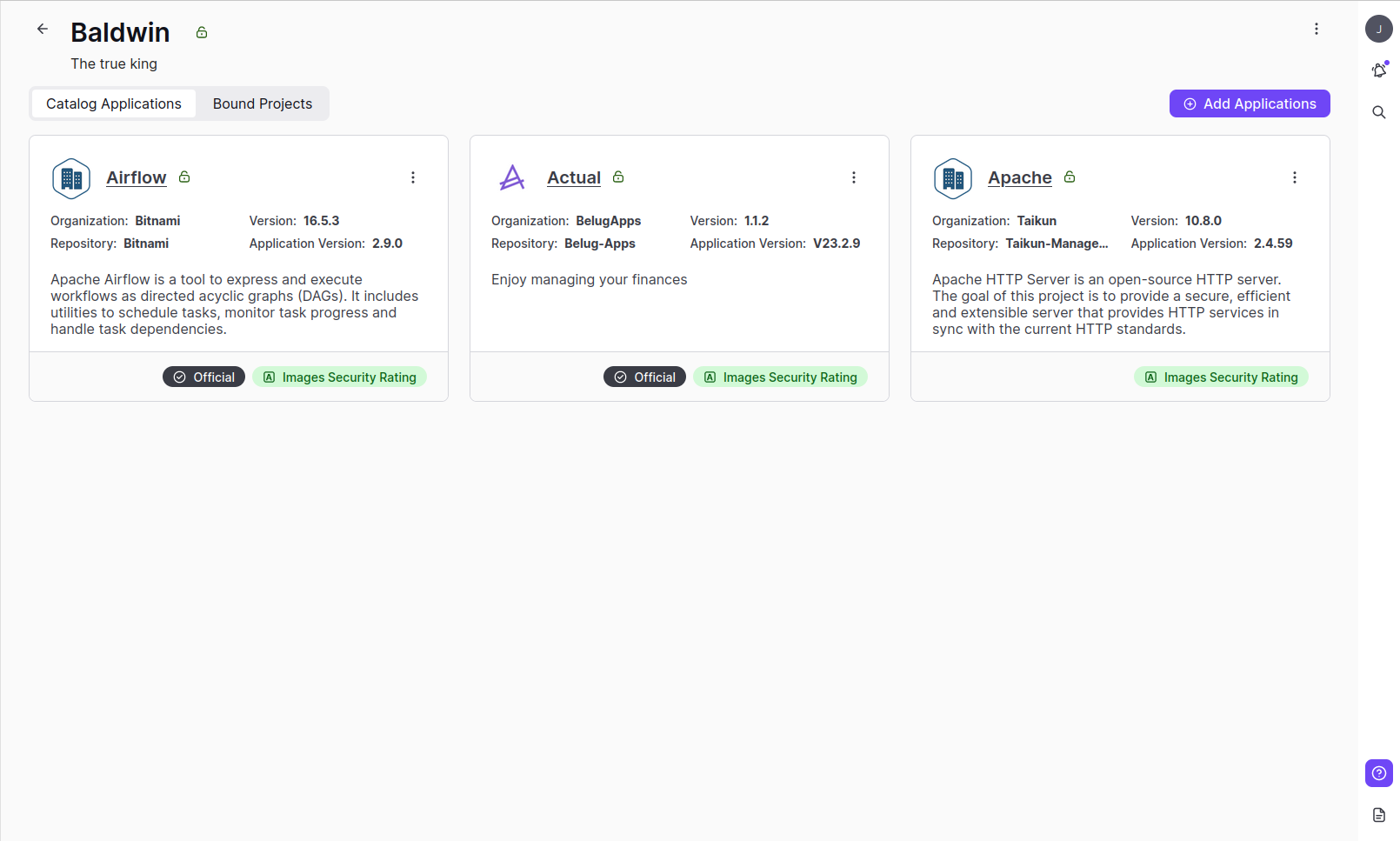
Added Application in catalog
- Inside the application, basic details, parameters, and default values can be found.
- Parameters can be edited, and applications can be synced again.
- Different versions of applications can be selected, but users can only select the latest version, not an older one.
- A catalog can only be deleted if it is empty and has no applications or projects attached. If a project is bound to it or an application has been added, it cannot be deleted.
Upgrading Application Version
To upgrade an application to a newer version, you must navigate to the Catalog where the application is stored. Select the available newer version and click Save.
After saving the change in the Catalog, return to the Applications section within your project and click Sync. This action will initiate the synchronization of the application's version in your project to the newly selected version in the Catalog.
Note
Downgrade is not supported
Find All Installed Applications
- In the Applications section, you can find a list of all installed applications with information such as Namespace, Catalog Name, and Bound Projects.
- You can directly uninstall any of the installed applications from this section.